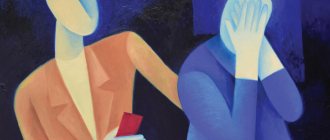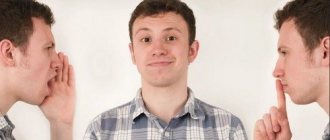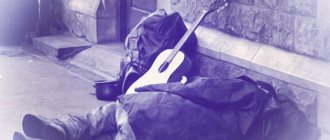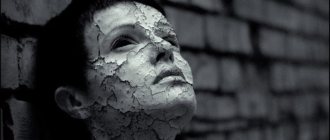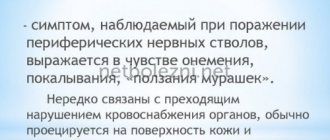What is algophobia
The name is derived from the ancient Greek words ἄλγος, meaning "pain", and φόβος, meaning "fear". Algophobia is a panicky fear of pain. In some sources you can read that algophobia is a fear of cold. In fact, the fear of cold is called cryophobia.
Algophobe suffers from irrational anxiety and cannot get rid of it. A person avoids situations in which he is likely or potentially likely to experience even the slightest pain. Each patient has his own list of situations, types of activity, objects and objects that are perceived as dangerous.
Examples of threatening objects and conditions:
- street (fight, dog attack, sprained leg, accident, etc.);
- extreme sports;
- cooking (knives, other objects that can hurt you);
- construction and any repair work;
- public places and public celebrations;
- competitions;
- much more.
Some are afraid of getting sick and experiencing pain, others are afraid of pain during death or during sex. Others are tormented by the thought: “How to give birth without fear and pain.” Some people only experience fear of toothache. And someone does not care about physical pain, but is tormented by the fear of the pain of life, suffering, despair, disappointment, etc. Often the fear of moral pain triggers the emergence of other fears. For example, some women are afraid of divorce due to fear of mental pain. And some are even afraid not to feel pain, but to cause pain to another.
Essentially, an algophobe is afraid of the whole world. It's no joke, because you never know that your tooth will hurt, or that you will step on something hard and sharp. In dangerous situations, panic attacks occur; at these moments a person is not at all aware of his actions, afraid of dying or going crazy.
It is important! Due to the specifics of algophobia, it can be confused with another fear, for example, with oxyphobia - fear of sharp objects. Or with a fear of heights, doctors, etc. In women, this can be confused with tokophobia - the fear of childbirth.
Causes of fear of pain
Most often, algophobia develops against the background of personal psychological trauma, that is, a person is tormented by memories of pain due to a blow, burn, fracture or other physical injury. Or the algophobe saw someone suffering from pain, becoming angry and irritable due to illness. In this case, there may still be an irrational feeling of guilt. One way or another, a traumatic shock can happen in childhood or in adulthood.
The second version of psychotrauma is systematic exposure to a stress factor. For example, a fear of pain may develop in a person who was often beaten and punished by parents or other people. In most cases, this refers to childhood memories, but this can also happen in adult life (captivity, torture, mobbing).
Other causes of fear of pain:
- low pain threshold as a feature of the body;
- presence of chronic diseases;
- sadomasochistic tendencies (Freud's theory of repression of forbidden desires);
- an attitude towards self-destruction and dissatisfaction with life (protective fear that a person will not do anything to himself);
- aggressiveness and asocial orientation of the individual (fear restrains destructive impulses, the person is afraid of punishment).
Algophobia is often combined with other fears, for example, fear of death. Or the fear of pain has a more specific manifestation, for example, a person is worried not by the fact of pain itself, but by the fear that it will not stop, or that he will remain disabled and will be in a humiliating position.
This is interesting! Psychologists note that modern people are more afraid of pain than our ancestors. The thing is that the current generation is accustomed to comfort and convenience, so at the slightest hint of pain they run to the pharmacy or hospital.
Diagnostics
In a personal conversation with the patient, the psychiatrist will determine the symptoms of the disease
The pathological form of fear can be very difficult to recognize. There are a number of psychological disorders that have similar symptoms. Restlessness and numbness of the limbs can occur against the background of depressive disorders, as well as insomnia.
Phobias manifest differently in each person. Some give up their usual pastime and lock themselves at home. Others lead normal lives, only occasionally experiencing a strong sense of fear. A psychologist should work with both categories of people. It is very difficult to diagnose this problem without the help of a specialist.
A psychologist diagnoses phobias using personal conversation, leading questions and visual techniques. He also helps the patient understand what caused the development of his panic fear.
Signs and symptoms of fear of pain
The main symptom of algophobia is irrational anxiety in front of potentially dangerous situations and avoidance of them. For example, algophobes put off visiting a dentist or other doctor until the last minute. If an algophobe nevertheless finds himself in a frightening situation, then he is seized with panic.
During a panic attack, somatic deterioration is noticeable:
- tremor;
- shiver;
- chills;
- tachycardia;
- arrhythmia;
- cephalgia;
- chest pain;
- breathing problems;
- sweating;
- nausea;
- dry mouth;
- presyncope and fainting.
All this further worsens a person’s mental state, because he understands that in these seconds he is closer than ever to what he is afraid of – pain.
Signs of algophobia
The main sign of pathology is an insurmountable fear of experiencing another pain. Suddenly anxiety appears, anxiety increases with the manifestation of panic.
Signs of algophobia manifest themselves as follows:
- Increased heart rate, tachycardia, increased blood pressure.
- Shortness of breath, feeling of lack of air.
- Trembling in the body, weakness in the limbs.
- Pallor of the skin.
- Increased level of sweating.
- Dizziness.
- Attacks of nausea, vomiting.
- Cramps in the abdominal area.
- Panic fear.
- Loss of consciousness.
Diagnosis of phobia fear of pain
As we have already said, algophobia can be confused with other fears, and it is often combined with other phobias. This makes diagnosis difficult and makes self-diagnosis impossible. There are no special, officially accepted tests for identifying algophobia.
To make a diagnosis, you need to see a psychotherapist. The specialist collects anamnesis, assesses the patient’s condition from his words and based on the results of his observation. It is important to establish that the issue is precisely fear, that there is no connection to individual conditions or a group of objects.
Treatment of photophobia
If tolerance to light does not recover naturally, you should consult a doctor.
If photophobia is accompanied by acute pain in the eyes, you should consult an ophthalmologist as soon as possible - there may be significant damage to the structures of the eye.
If you have other symptoms (headache, fever, nausea), you should first consult a general practitioner (general practitioner, family doctor or pediatrician), who will understand the causes of the disease and, if necessary, refer you to a neurologist.
Treatment of photophobia consists of eliminating the cause that led to the symptom. During the treatment period, the doctor may recommend wearing glasses with tinted lenses to eliminate discomfort.
Treatment of fear of pain
From a therapeutic point of view, this is one of the most difficult phobias. The reasons for the fear of pain are not always on the surface; sometimes we are talking about hidden, complex psychological preconditions. This is important to consider when choosing treatment. For example, if the issue is sadomasochistic tendencies, a subconscious desire to experience or cause pain, then you need to understand the nature of these tendencies and fight it. Then the fear of pain will go away on its own over time, because the person realizes that he is in control of the situation.
In general, psychotherapy methods are used to treat algophobia: cognitive behavioral psychotherapy, NLP, hypnosis, systematic desensitization method, psychoanalysis, art therapy and others. In most cases, medication is indicated: sedatives, antidepressants. Read more about this in another article.
Note! Autogenic training helps well as self-help for fear of pain.
How to get rid of the fear of physical pain yourself
How to overcome and overcome the fear of physical pain? How not to be afraid of pain? You need to convince yourself that in everyday life it is extremely difficult to get such a portion of pain that you cannot withstand. Yes, it is very unpleasant, but you will not die if you hit your foot or hand.
If you are tormented by fear of pain during childbirth, it is important to remember that proper breathing and anesthesia can subside unwanted reactions. If you have a toothache or headache, you can also take a tablet. Of course, medications are an emergency measure. It is better to find a somatic or psychological cause of physical pain and direct your efforts to get rid of the root cause.
It is also important to remember that the physical reaction to the impact lasts only a few seconds, the emotional reaction lasts a maximum of 15 minutes. The rest of the time, people themselves “increase” the pain. That is, you decide for yourself whether to feel pain or not. By the way, the same rule is true for emotional pain, but we will analyze it separately.
How to get rid of the fear of mental pain yourself
How to overcome and overcome the fear of moral pain? Make friends with pain. Just as physical pain protects against something and warns you, mental pain indicates a current problem or helps you realize what is really important to you. Pain helps you prioritize.
Maybe you choose the wrong people or are too touchy. Maybe you yourself provoke people into conflicts, etc. Examine your pain and find what you really need to deal with. Pain is not an enemy, it is a friend, a guide.
How to get rid of the fear of hurting someone yourself
How to overcome and overcome the fear of hurting someone physically or mentally? You need to convince yourself that you cannot control other people's reactions and you cannot predict events. That is, you cannot know that some words will offend another person, you cannot sacrifice yourself to satisfy other people’s needs (for example, stay in a relationship, afraid of hurting someone else by breaking up).
If you are afraid of causing pain due to outbursts of aggression, terrible obsessive thoughts or something similar, then you should consult a psychologist. In any case, it is important to work with the root cause. You must analyze and understand what is hidden behind the fear of hurting another in your case. You also need to analyze the fear for validity. Why did you even decide that you could hurt someone? Has this already happened? Was this really your fault?
Causes of algophobia
What is algophobia? This is the fear of physical pain. According to psychoanalytic theory, the fear of pain is the result of a subconscious desire to experience this sensation. That is, we are talking about a masochistic personality type. If this is the problem, then you need to look for the reason for this attraction and work on changing your personality.
But more often, fear is associated with a person’s negative personal experience and other character traits:
- Increased impressionability. Some people tend to exaggerate; they see and expect greater danger than it actually is. And they perceive real discomfort much more acutely.
- Personal negative experience. Memories can extend both to a specific situation, for example, drawing blood from a vein, and to any situations in which a person expects to encounter the object of fear. But, one way or another, alginophobia begins with a specific situation. It could be anything: an accident, violence in childhood or adulthood, a fall from a bicycle, a chronic illness or long-term treatment for some pathology, an accident.
- Suggestibility and dependence on other people's opinions. Pain syndrome is a subjective symptom. Two different people do not necessarily experience the same sensations in the same situation. However, some people depend on the opinion of the majority and can thus adopt their fear of pain and focus on their negative experience.
Children are afraid of painful sensations due to problems in the family and in relationships with peers. Most often, the basis is personal negative experience: beating by classmates, punishment from parents. Such developmental conditions affect the child’s confidence, trust, and general condition.
Often, the pain itself in a child is psychosomatic in nature and is a means of attracting attention or rallying parents. Frequent attacks become a prerequisite for the development of fear of pain, especially if this coincides with parental scandals. The scheme is this: the child reacts to a quarrel with a pain syndrome, in his consciousness he puts aside the connection between discomfort and quarrels, the child lives in tension and anticipation of a new conflict, and at the same time he expects pain.
It is important! The cause of children's fear must be sought in the behavior of their parents. Either in their relationship to each other, or in their relationship to the child.
Why is fear of pain dangerous?
Obsessive thoughts, panic fear and anxiety, somatic manifestations of fear interfere with leading a normal life and interfere with the socialization of the individual. Algophobe loses work, friends, entertainment. Algophobia is one of those phobias whose object is always nearby. After all, even at home a person does not feel safe: you can accidentally hit or stumble. Yes, of course, you can cover the walls of the house and the floor with soft fabric, take out all the furniture, etc., but this still will not save you from anxiety.
The situation is aggravated by the fact that psychological stress leads to real somatic deterioration, including pain. In addition to somatic diseases, secondary mental disorders, such as depression, develop due to stress. Without treatment, this can transform into suicidal tendencies.
Treatment of algophobia
Treatment of algophobia is carried out on the basis of drug therapy, psychotherapy and special training. Severe cases with symptomatic depression, anxiety and similar signs of depressive disorders should be treated by a psychiatrist or clinical psychologist.
Drug therapy
Medication-based treatment consists of taking psychotropic substances that relieve the symptoms of a phobic disorder and improve the patient's behavior. Taking medications on your own is strictly prohibited. Effective and common drugs include:
- Antidepressants (Paroxetine, Amitriptyline) eliminate depressed mood, apathy, weakness, and tone the body. Correctly selected dosage has a beneficial effect on mental activity and prolongs calm.
- Sedatives (tincture of lemon balm, motherwort, valerian) relieve emotional stress and calm the nervous system. Sedatives do not cause drowsiness and have virtually no contraindications.
- Tranquilizers (Gidazepam, Clonazepam, Phenazepam) alleviate the current manifestations of the phobia: eliminate irritability, anxiety, restlessness, and insomnia.
Psychotherapy
Algophobia is an anxiety disorder that can cause mental disorders and various chronic diseases. To eliminate pathological fear, there are special psychotherapeutic techniques:
- Behavioral therapy allows you to change a person’s negative thoughts and beliefs to positive thinking, eliminates fear and anxiety.
- Psychoanalysis allows you to determine the causes of fear at a deeply subconscious level and eliminate them in the shortest possible time.
- Hypnosis helps eliminate the patient's fears at the subconscious level after putting him into a trance.
Autogenic training
Autogenic training is an effective method of combating the fear of pain. The technique is easy to learn and successfully applied in practice in the fight against one’s own fear. Self-hypnosis is a powerful technique that has an effective effect on the physiological and psychological processes of the body.
A set of light exercises will allow you to completely relax your body and muscles, normalize your psycho-emotional state, reduce symptoms of anxiety and eliminate fears. As a result, the physical and psychological condition of a person improves.
Autogenic training should be performed daily until you feel completely better and your fears disappear. Autogenic training is recommended to be carried out several times a day: immediately after waking up, during a break, before falling asleep. To do this, you will need to compose certain phrases for yourself, constantly pronounce them mentally and visualize them. Each workout should be performed for at least 10 minutes. The result will be noticeable within 7 days after regularly performing this technique.



